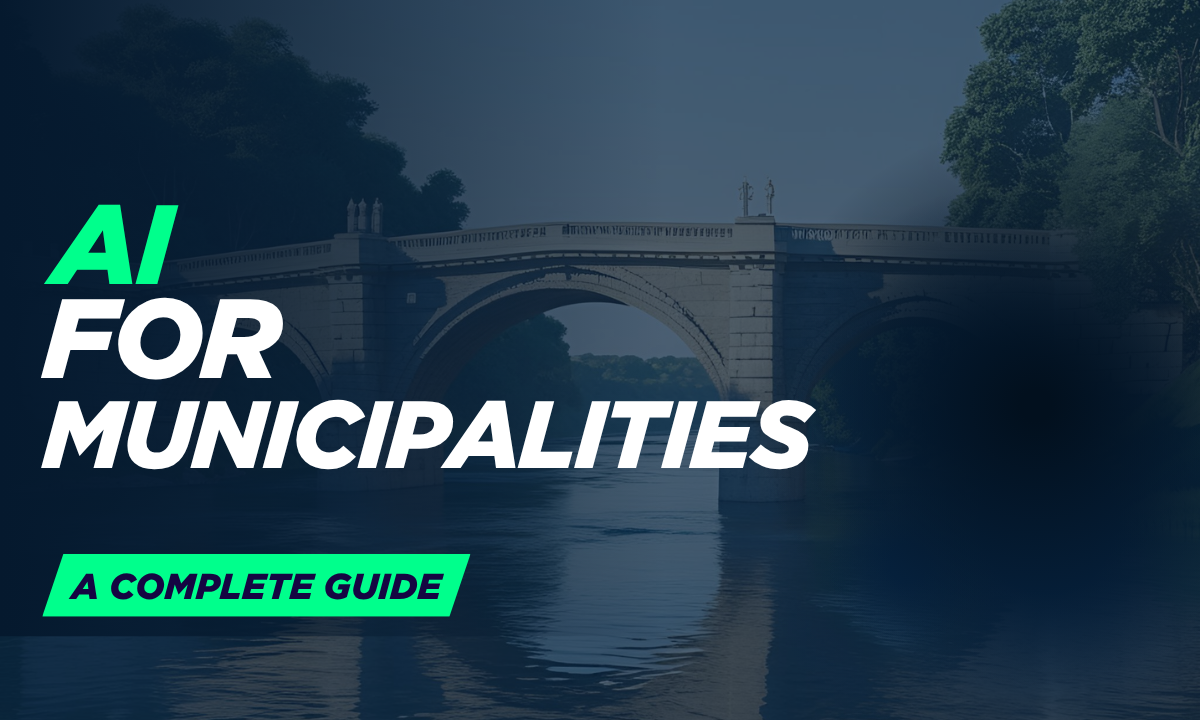How Municipalities Can Leverage AI for Efficient Operations
Local municipalities face mounting pressures to deliver services efficiently while managing limited resources. Artificial Intelligence (AI) offers transformative potential to streamline operations, enhance decision-making, and improve citizen engagement. From automating routine tasks to analyzing complex datasets, AI can empower local governments to operate smarter and more effectively. This article explores the best ways municipalities can adopt and prompt AI to support their day-to-day operations, providing practical insights for administrators and policymakers.
Automating Administrative Tasks
Municipalities handle a vast array of administrative tasks, from processing permits to managing public records. AI-powered automation can significantly reduce the time and cost associated with these processes. For example, chatbots equipped with natural language processing (NLP) can handle routine citizen inquiries, such as questions about trash collection schedules or tax deadlines, freeing up staff for more complex tasks.
AI can also streamline document processing. Optical character recognition (OCR) combined with machine learning can digitize and categorize paper-based records, making them searchable and easier to manage. A report from Deloitte highlights how AI-driven automation can reduce administrative workloads by up to 30%, allowing municipal employees to focus on high-value work. By implementing these tools, municipalities can improve operational efficiency and reduce human error.
To prompt AI effectively for administrative tasks, municipalities should:
- Use clear, task-specific prompts like, “Summarize citizen complaints from the past month” or “Generate a report of pending permit applications.”
- Train AI systems with historical data to improve accuracy in document classification and response generation.
- Regularly review AI outputs to ensure compliance with local regulations and policies.
Enhancing Data-Driven Decision Making
Municipalities collect vast amounts of data, from traffic patterns to utility usage. AI can analyze this data to uncover actionable insights, enabling better decision-making. Machine learning algorithms can identify trends, predict future needs, and optimize resource allocation. For instance, AI can forecast peak energy demands, helping utilities adjust supply proactively.
Urban planning is another area where AI shines. By analyzing demographic data, traffic flows, and land use patterns, AI can help municipalities design more sustainable communities. IBM’s AI solutions for smart cities demonstrate how predictive analytics can optimize infrastructure investments, such as determining the best locations for new public transit routes.
To leverage AI for decision-making, municipalities should:
- Prompt AI with specific questions, such as, “What are the top three areas with traffic congestion during rush hours?” or “Predict water usage for the next quarter based on historical trends.”
- Integrate AI tools with existing data platforms to ensure seamless access to real-time information.
- Collaborate with data scientists to validate AI models and ensure they align with municipal goals.
Improving Citizen Engagement
AI can enhance how municipalities interact with residents. Virtual assistants powered by AI can provide 24/7 support, answering questions in multiple languages and reducing wait times. These tools can also collect feedback through surveys or social media analysis, helping municipalities gauge public sentiment on proposed policies.
Sentiment analysis, a subset of AI, can process comments from town hall meetings or online forums to identify common concerns. For example, if residents frequently mention potholes in a specific neighborhood, AI can flag this issue for prioritized action. By addressing citizen needs proactively, municipalities can build trust and foster stronger community ties.
To prompt AI for citizen engagement, municipalities should:
- Use prompts like, “Analyze public comments on the new park proposal and summarize key themes” or “Translate resident inquiries into Spanish for faster response.”
- Ensure AI tools comply with accessibility standards, such as providing text-to-speech for visually impaired users.
- Monitor AI interactions to maintain a human touch and avoid overly robotic responses.
Optimizing Public Safety
AI can bolster public safety by enhancing predictive policing, emergency response, and disaster preparedness. Machine learning models can analyze crime data to predict high-risk areas, allowing police departments to allocate patrols more effectively. Similarly, AI can optimize fire department response times by analyzing traffic and incident data to recommend the fastest routes.
In disaster management, AI can model flood risks or wildfire spread based on weather and geographic data, enabling municipalities to prepare evacuation plans. A study by McKinsey notes that AI-driven predictive models can improve emergency response times by up to 20%. These tools empower municipalities to act swiftly and save lives.
To use AI for public safety, municipalities should:
- Prompt AI with queries like, “Identify areas with the highest crime rates this month” or “Simulate flood risks for the downtown area under heavy rainfall.”
- Partner with local law enforcement and emergency services to ensure AI tools meet operational needs.
- Implement strict data privacy protocols to protect sensitive information.
Supporting Infrastructure and Utilities Management
Maintaining infrastructure and utilities is a core municipal responsibility. AI can optimize these operations by predicting maintenance needs and reducing downtime. For example, AI-powered sensors can monitor water pipelines for leaks, alerting maintenance teams before issues escalate. Similarly, AI can analyze traffic light performance to reduce congestion and improve fuel efficiency.
Energy management is another critical application. AI can optimize street lighting by adjusting brightness based on pedestrian activity, saving energy without compromising safety. Google’s AI for sustainability showcases how machine learning can reduce energy consumption in municipal buildings by up to 15%.
To prompt AI for infrastructure management, municipalities should:
- Use prompts like, “Predict which roads will need repairs in the next six months” or “Optimize traffic light timing for morning commutes.”
- Invest in IoT (Internet of Things) devices to collect real-time data for AI analysis.
- Conduct pilot projects to test AI solutions before scaling them citywide.
Overcoming Challenges in AI Adoption
While AI offers significant benefits, municipalities must address challenges like cost, expertise, and ethical concerns. Smaller municipalities may lack the budget for advanced AI tools, but cloud-based solutions and open-source platforms can lower barriers to entry. Training staff to use AI effectively is also critical, as is ensuring transparency in how AI decisions are made.
Ethical considerations, such as bias in AI algorithms, require careful oversight. Municipalities should establish clear guidelines for AI use, prioritizing fairness and accountability. Engaging with community stakeholders can also help address concerns about privacy and build public support for AI initiatives.
Getting Started with AI
Municipalities looking to adopt AI should start small, focusing on high-impact areas like administrative automation or citizen engagement. Partnering with technology providers or universities can provide access to expertise and resources. Pilot programs allow municipalities to test AI tools without committing to large-scale investments upfront.
To ensure success, municipalities should:
- Develop a clear AI strategy aligned with local priorities.
- Invest in staff training to build confidence in using AI tools.
- Communicate the benefits of AI to residents to foster trust and adoption.
Conclusion
AI holds immense potential to transform municipal operations, from automating routine tasks to optimizing public safety and infrastructure. By adopting AI strategically and prompting it effectively, local governments can deliver better services, make data-driven decisions, and engage citizens more meaningfully. As municipalities navigate the complexities of AI adoption, starting with small, focused initiatives and prioritizing transparency will pave the way for smarter, more efficient governance. The future of local government is bright, and AI is a powerful tool to help municipalities shine.






